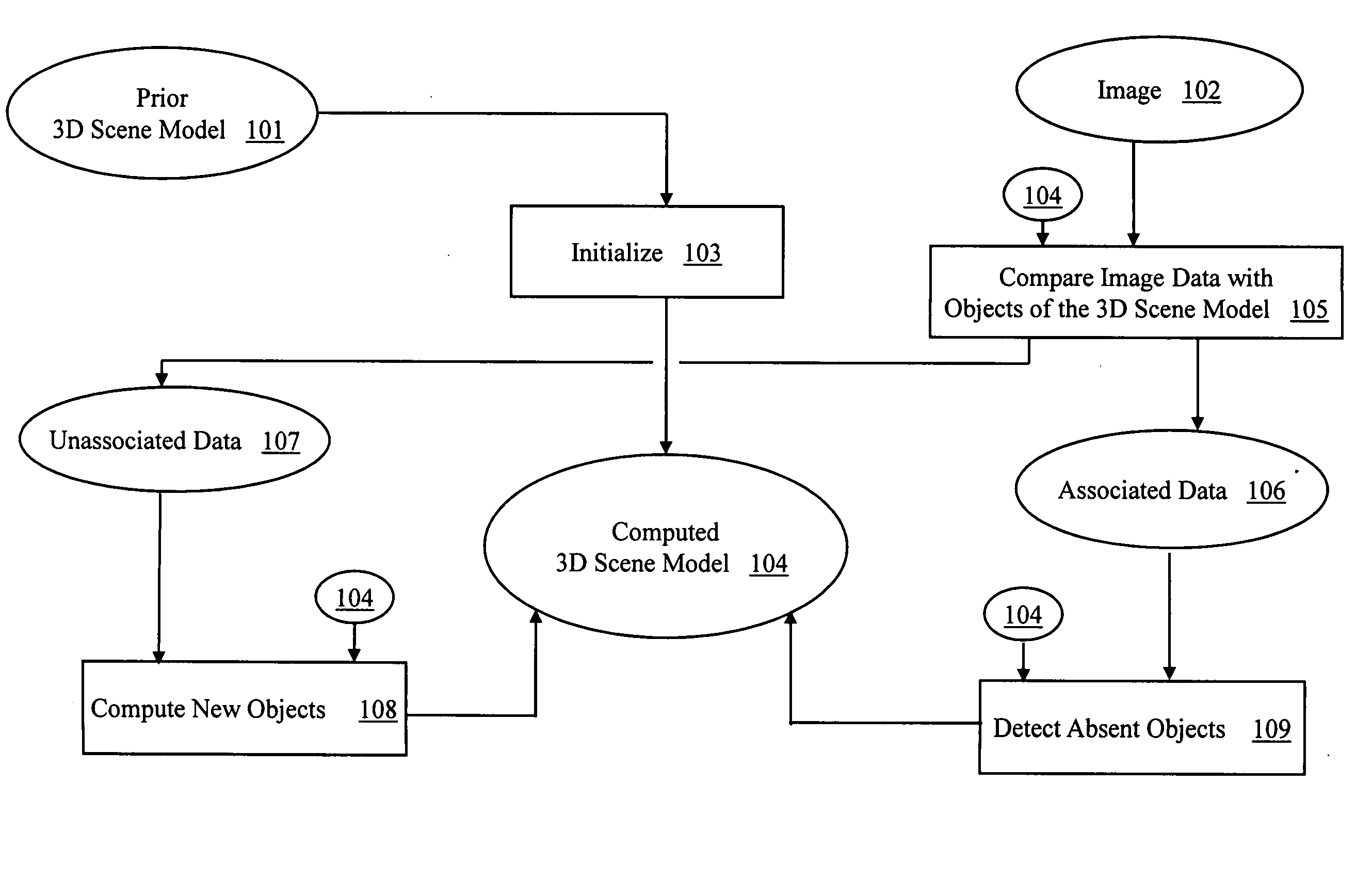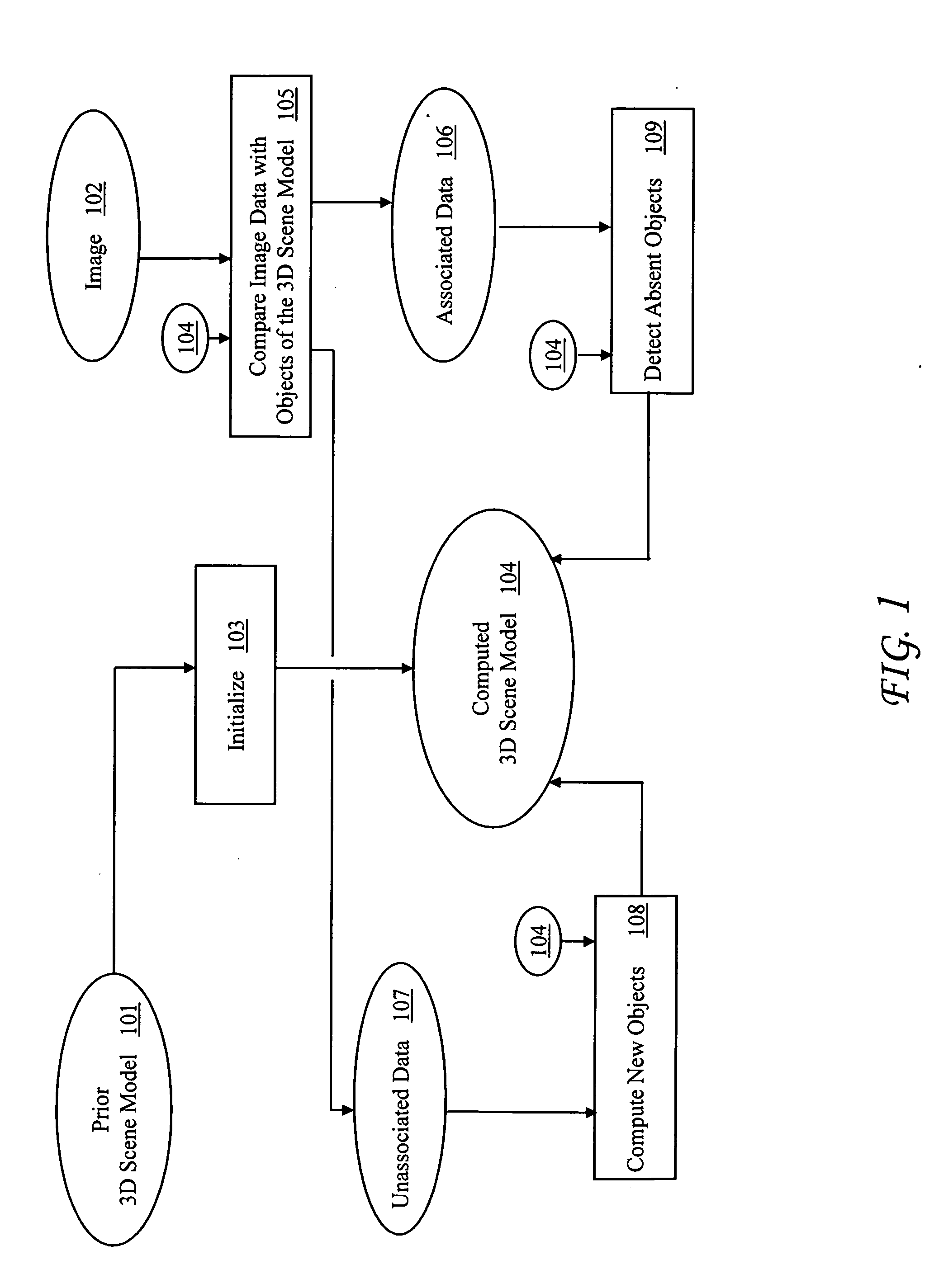System and method for constructing a 3D scene model from an image
image technology, applied in the field of computer vision, can solve the problems of not having an entirely satisfactory method for reliably constructing a 3d scene model, many difficult problems in doing,
- Summary
- Abstract
- Description
- Claims
- Application Information
AI Technical Summary
Benefits of technology
Problems solved by technology
Method used
Image
Examples
examples
[0043]Some examples will illustrate the utility of the present invention, showing the results computed by typical embodiments.
[0044]Suppose there is a scene with an object pl. Subsequently, an object pf is placed in front of pl, occluding it from direct observation from the imaging device. Then an image of the scene is acquired. Persistence suggests that pl has remained where it was, even though it appears nowhere in the image, and this persistence is expressed in the dynamic model. The present invention computes a new 3D scene model in which the occluded object remains present and designated as Unverifiable, meaning that the image data neither confirms nor contradicts its presence. Using a prior 3D scene model allows the method to retain hidden state, possibly over a long duration in which the object cannot be observed.
[0045]Suppose there is a scene with an upright cylinder pc. Subsequently, a second cylinder pd of identical radius and visual appearance is placed on it. An image is...
first embodiment
The first embodiment uses τ=3 σ, where σ is the standard deviation of equation (3). The quality of the data association is the distance of a data point to the object to which it is associated.
[0159]The signed distance function E is defined for three shapes: spheres, cylinders, and cuboids. Let t=(x,y,z)T. For a sphere with radius r and center c=(cx; cy; cz)T, the signed distance function is
Es(c, r; t)=sqrt((x−cx)2+(y−cy)2+(z−cz)2)−r (5)
For a cylinder with height h, radius r, center c=(cx; cy; cz)T and orientation described by rotation R, the signed distance function is
EC(c, R, h, r; t)=max(sqrt(x′2+y′2)−r, |z′|−h / 2) (6)
where (x′,y′,z′)T=RT(t−c).
For a cuboid with center c, orientation described by rotation R, and dimensions d=(dx, dy, dz)T the signed distance function is
EB(c, R, d; t)=max (|x′|−dx / 2, |y′|−dy / 2, |z′|−dz / 2) (7)
where (x′,y′,z′)T=RT(t−c).
Object Presence Test
[0160]Referring to step 203 of FIG. 2, to test an object instance p for object presence, the set of locations...
PUM
 Login to View More
Login to View More Abstract
Description
Claims
Application Information
 Login to View More
Login to View More - R&D
- Intellectual Property
- Life Sciences
- Materials
- Tech Scout
- Unparalleled Data Quality
- Higher Quality Content
- 60% Fewer Hallucinations
Browse by: Latest US Patents, China's latest patents, Technical Efficacy Thesaurus, Application Domain, Technology Topic, Popular Technical Reports.
© 2025 PatSnap. All rights reserved.Legal|Privacy policy|Modern Slavery Act Transparency Statement|Sitemap|About US| Contact US: help@patsnap.com



